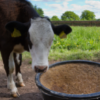-

Aug
26
NASEM Establishes New Strategic Council

The NASEM are private, nonprofit institutions that provide independent, objective analysis and advice to the nation to resolve complications and inform public policy decisions related to science, technology, and medicine. They operate under an 1863 congressional charter to the National Academy of Sciences (NAS).
Read more
-

Aug
26
IPCC Releases Climate Report

The report addresses our physical understanding of the climate system and climate change, using the latest scientific advances and evidence from paleoclimate, observations, process understanding, global and regional climate simulations. This report also details how human influence has affected the climate over time.
Read more
-

Aug
26
Life Expectancy in the US Drops

"Life expectancy has been increasing gradually every year for the past several decades," Elizabeth Arias, a CDC researcher who worked on the report, told Reuters. "The decline between 2019 and 2020 was so large that it took us back to the levels we were in 2003. Sort of like we lost a decade."
Read more
-

Aug
26
Court Denies Challenges to California Prop 12

After the disappointing rejection from the U.S. Supreme Court, the U.S. Court of Appeals for the Ninth Circuit had denied the petition from the National Pork Producers Council (NPPC) and the American Farm Bureau Federation (AFBF) to rescind California’s Proposition 12 (Prop 12) as unconstitutional under the dormant Commerce Clause.
Read more
-

Aug
26
Groups Push for Massachusetts to Delay Animal Confinement Law

The National Pork Producers Council (NPPC) and the North American Meat Institute (NAMI) are advising Massachusetts to defer implementation of the Act to Prevent Cruelty to Farm Animals (the Act). With just five months until enforcement, NPPC and NAMI state that the Attorney General for the state is 19 months late in providing rules and regulations for the Act to farmers and producers.
Read more
-

Aug
26
Exposing Agricultural Trade Suppression Act Introduced
.png?sfvrsn=1f584fd1_0)
The Exposing Agricultural Trade Suppression Act (EATS Act) was introduced as a rebuttal to California’s Proposition 12 (Prop 12), a policy that would establish minimum space requirements for breeding pigs, calves raised for veal, and egg-laying hens within the state. It also bans the sale of pork, veal, and eggs from animals raised elsewhere if their living conditions do not meet California’s standards.
Read more
-

Aug
26
Court Rules Beef Checkoff as Constitutional
.png?sfvrsn=ed584fd1_0)
The Ranchers-Cattlemen Action Legal Fund (R-CALF) lost the challenge they brought against the Beef Checkoff. The U.S. Ninth Circuit Court of Appeals reaffirmed the constitutionality of the program. R-CALF claimed the program violated the First Amendment.
Read more
-

Aug
26
Heirs’ Property Relending Program Announced
.png?sfvrsn=c2584fd1_0)
Tom Vilsack, the United States Department of Agriculture’s (USDA) Secretary of Agriculture announced that the USDA will provide $67 million in competitive loans through the new Heirs’ Property Relending Program (HPRP), aimed to help agricultural producers and landowners resolve heirs’ land ownership and succession issues, specifically in minority communities.
Read more
-

Aug
23
Modulation of jejunal mucosa-associated microbiota in relation to intestinal health and nutrient digestibility in pigs by supplementation of β-glucanase to corn–soybean meal-based diets with xylanase
.png?sfvrsn=d5324fd1_0)
A study recently published in the Journal of Animal Science aimed to evaluate the effects of increasing levels of β-glucanase on the modulation of jejunal mucosa-associated microbiota in relation to nutrient digestibility and intestinal health of pigs fed diets with 30% corn distiller’s dried grains with solubles and xylanase. A recent study, Chen et al. (2020) evaluated the effects of increasing levels of xylanase on intestinal health and growth performance of nursery pigs and demonstrated that xylanase effectively enhanced intestinal health and growth performance of nursery pigs.
Read more
-

Aug
23
Interpretive Summary: Hybrid rye may replace up to 75% of the corn in diets for gestating and lactating sows without negatively impacting sow and piglet performance
.png?sfvrsn=9c324fd1_0)
Historically, rye has not been used in swine diets due to ergot contamination and high concentrations of antinutritional factors. However, new hybrid varieties offer a reduction in ergot contamination and antinutritional factors. Recent research has compared hybrid rye to barley, wheat, and soybean meal when fed to sows; however, no data compares it to corn diets.
Read more
-

Aug
23
Interpretive Summary: Impact of manganese amino acid complex on tissue-specific trace mineral distribution and corpus luteum function in gilts
.png?sfvrsn=4e314fd1_0)
Manganese (Mn) is an essential element used as a cofactor for enzymes involved in synthesizing cholesterol, which is the precursor for producing steroid hormones necessary for proper reproductive function.
Read more
-

Aug
23
Interpretive Summary: Net energy value of canola meal, field pea, and wheat millrun fed to growing-finishing pigs
.png?sfvrsn=13314fd1_0)
Energy is the most expensive component of swine diets; thus, optimizing energy utilization is needed to reduce costs. One way to maximize utilization is matching dietary energy supply to its requirements by pigs. Energy values of certain feedstuffs are critical to making this match. In North America, canola meal, field pea, and wheat millrun (WE) are alternatives to soybean meal (SBM) and cereal grain.
Read more
-

Aug
19
Interpretive Summary: Investigating pig survival in different production phases using genomic models
.png?sfvrsn=13304fd1_0)
Optimizing the survivability of pigs is crucial for both animal welfare and the productivity of farms. Typically, up to a third of pigs do not survive to harvesting. Survivability is poorest from birth to postweaning and various factors such as environment, infection and other external stressors can impact morbidity and mortality.
Read more
-

Aug
19
Interpretive Summary: Impact of including the cause of missing records on genetic evaluations for growth in commercial pigs
.png?sfvrsn=493a4fd1_0)
Hot carcass weight (HCW) and birth weight (BW) are two heritable traits that are of high value in commercial pig breeding. These traits are valuable because they are needed to calculate accurate predictive breeding values.
Read more
-

Aug
19
Interpretive Summary: Source of trace minerals impacts digestibility in steers
.png?sfvrsn=47304fd1_0)
The source of trace minerals in animal feed may impact its digestibility. In this recent study published in the Journal of Animal Science, researchers compared the neutral detergent fiber (NDF) digestibility of hydroxy trace minerals (HTMs) and sulfate trace minerals (STM) in steers. They hypothesized that the source of trace minerals would impact both digestibility and rumen fermentation. They also hypothesized that ruminal soluble concentrations of minerals would differ based on trace mineral source.
Read more
-

Aug
12
Interpretive Summary: Evaluation of sow thermal preference across three stages of reproduction
87a62d897d8c62e581bfff00009094bd.png?sfvrsn=52a4fd1_0)
Heat stress has had significant adverse effects on the swine industry, including infertility in sows, characterized by anestrus, increased wean-to-estrus interval. However, heat stress is not limited to lactation. It may also affect a sow during gestation, causing increased embryo mortality, reduced farrowing rate, reduced litter size and weight, and an increased number of stillborn piglets.
Read more
-

Aug
12
Interpretive Summary: Infographic: Effect of guanidinoacetic acid supplementation in cattle.
a3a62d897d8c62e581bfff00009094bd.png?sfvrsn=212a4fd1_0)
Guanidinoacetic acid (GAA) is a naturally occurring precursor to creatine and is an important fuel source for muscle; therefore, it can improve the performance of growing cattle. Scientists believe the mechanism by which performance is enhanced includes increases in IGF-1 serum and feed conversions.
Read more
-

Aug
12
Duenk Genomic Selection Review: Optimizing genomic selection for crossbred performance by model improvement and data collection

Crossbreeding, genetically crossing purebred lines to improve the performance of the progeny, is widely practiced in pig and poultry production. However, this practice is made more challenging because the selection practices occur on purebred lines, but the performance improvements are measured in the crossbred offspring. The genetic correlation between purebred and crossbred performance can be predicted, meaning a breeding value can be calculated for crossbred animals.
Read more
-

Aug
07
Interpretive Summary: Development of a model to predict dietary metabolizable energy from digestible energy in beef cattle

Understanding the utilization of feed energy is essential for precision feeding in the production of beef cattle. A study recently published in the Journal of Animal Science aimed to assess whether predicting the metabolizable energy to digestible energy ratio, rather than a prediction of metabolizable energy with digestible energy, is feasible; in addition, the research team aimed to develop a model equation to predict metabolizable energy based on digestible energy measurement and dietary components in beef cattle.
Read more
-

Aug
07
Interpretive Summary: Programming of postnatal phenotype caused by exposure of cultured embryos from Brahman cattle to colony-stimulating factor 2 and serum
.png?sfvrsn=20284fd1_0)
It is known that alterations in the environment of the preimplantation embryo can affect competence to establish pregnancy and phenotype of resultant calves, but there is no clear evidence for the effects of serum on postnatal phenotype of calves. A study recently published in the Journal of Animal Science evaluated the postnatal programming actions of the embryokine colony-stimulating factor 2 and serum using Brahman embryos produced in vitro.
Read more
 AugNASEM Establishes New Strategic Council
AugNASEM Establishes New Strategic Council The NASEM are private, nonprofit institutions that provide independent, objective analysis and advice to the nation to resolve complications and inform public policy decisions related to science, technology, and medicine. They operate under an 1863 congressional charter to the National Academy of Sciences (NAS).
The NASEM are private, nonprofit institutions that provide independent, objective analysis and advice to the nation to resolve complications and inform public policy decisions related to science, technology, and medicine. They operate under an 1863 congressional charter to the National Academy of Sciences (NAS). AugIPCC Releases Climate Report
AugIPCC Releases Climate Report The report addresses our physical understanding of the climate system and climate change, using the latest scientific advances and evidence from paleoclimate, observations, process understanding, global and regional climate simulations. This report also details how human influence has affected the climate over time.
The report addresses our physical understanding of the climate system and climate change, using the latest scientific advances and evidence from paleoclimate, observations, process understanding, global and regional climate simulations. This report also details how human influence has affected the climate over time. AugLife Expectancy in the US Drops
AugLife Expectancy in the US Drops "Life expectancy has been increasing gradually every year for the past several decades," Elizabeth Arias, a CDC researcher who worked on the report, told Reuters. "The decline between 2019 and 2020 was so large that it took us back to the levels we were in 2003. Sort of like we lost a decade."
"Life expectancy has been increasing gradually every year for the past several decades," Elizabeth Arias, a CDC researcher who worked on the report, told Reuters. "The decline between 2019 and 2020 was so large that it took us back to the levels we were in 2003. Sort of like we lost a decade." AugCourt Denies Challenges to California Prop 12
AugCourt Denies Challenges to California Prop 12 After the disappointing rejection from the U.S. Supreme Court, the U.S. Court of Appeals for the Ninth Circuit had denied the petition from the National Pork Producers Council (NPPC) and the American Farm Bureau Federation (AFBF) to rescind California’s Proposition 12 (Prop 12) as unconstitutional under the dormant Commerce Clause.
After the disappointing rejection from the U.S. Supreme Court, the U.S. Court of Appeals for the Ninth Circuit had denied the petition from the National Pork Producers Council (NPPC) and the American Farm Bureau Federation (AFBF) to rescind California’s Proposition 12 (Prop 12) as unconstitutional under the dormant Commerce Clause. AugGroups Push for Massachusetts to Delay Animal Confinement Law
AugGroups Push for Massachusetts to Delay Animal Confinement Law The National Pork Producers Council (NPPC) and the North American Meat Institute (NAMI) are advising Massachusetts to defer implementation of the Act to Prevent Cruelty to Farm Animals (the Act). With just five months until enforcement, NPPC and NAMI state that the Attorney General for the state is 19 months late in providing rules and regulations for the Act to farmers and producers.
The National Pork Producers Council (NPPC) and the North American Meat Institute (NAMI) are advising Massachusetts to defer implementation of the Act to Prevent Cruelty to Farm Animals (the Act). With just five months until enforcement, NPPC and NAMI state that the Attorney General for the state is 19 months late in providing rules and regulations for the Act to farmers and producers. AugExposing Agricultural Trade Suppression Act Introduced
AugExposing Agricultural Trade Suppression Act Introduced.png?sfvrsn=1f584fd1_0) The Exposing Agricultural Trade Suppression Act (EATS Act) was introduced as a rebuttal to California’s Proposition 12 (Prop 12), a policy that would establish minimum space requirements for breeding pigs, calves raised for veal, and egg-laying hens within the state. It also bans the sale of pork, veal, and eggs from animals raised elsewhere if their living conditions do not meet California’s standards.
The Exposing Agricultural Trade Suppression Act (EATS Act) was introduced as a rebuttal to California’s Proposition 12 (Prop 12), a policy that would establish minimum space requirements for breeding pigs, calves raised for veal, and egg-laying hens within the state. It also bans the sale of pork, veal, and eggs from animals raised elsewhere if their living conditions do not meet California’s standards. AugCourt Rules Beef Checkoff as Constitutional
AugCourt Rules Beef Checkoff as Constitutional.png?sfvrsn=ed584fd1_0) The Ranchers-Cattlemen Action Legal Fund (R-CALF) lost the challenge they brought against the Beef Checkoff. The U.S. Ninth Circuit Court of Appeals reaffirmed the constitutionality of the program. R-CALF claimed the program violated the First Amendment.
The Ranchers-Cattlemen Action Legal Fund (R-CALF) lost the challenge they brought against the Beef Checkoff. The U.S. Ninth Circuit Court of Appeals reaffirmed the constitutionality of the program. R-CALF claimed the program violated the First Amendment. AugHeirs’ Property Relending Program Announced
AugHeirs’ Property Relending Program Announced.png?sfvrsn=c2584fd1_0) Tom Vilsack, the United States Department of Agriculture’s (USDA) Secretary of Agriculture announced that the USDA will provide $67 million in competitive loans through the new Heirs’ Property Relending Program (HPRP), aimed to help agricultural producers and landowners resolve heirs’ land ownership and succession issues, specifically in minority communities.
Tom Vilsack, the United States Department of Agriculture’s (USDA) Secretary of Agriculture announced that the USDA will provide $67 million in competitive loans through the new Heirs’ Property Relending Program (HPRP), aimed to help agricultural producers and landowners resolve heirs’ land ownership and succession issues, specifically in minority communities. AugModulation of jejunal mucosa-associated microbiota in relation to intestinal health and nutrient digestibility in pigs by supplementation of β-glucanase to corn–soybean meal-based diets with xylanase
AugModulation of jejunal mucosa-associated microbiota in relation to intestinal health and nutrient digestibility in pigs by supplementation of β-glucanase to corn–soybean meal-based diets with xylanase.png?sfvrsn=d5324fd1_0) A study recently published in the Journal of Animal Science aimed to evaluate the effects of increasing levels of β-glucanase on the modulation of jejunal mucosa-associated microbiota in relation to nutrient digestibility and intestinal health of pigs fed diets with 30% corn distiller’s dried grains with solubles and xylanase. A recent study, Chen et al. (2020) evaluated the effects of increasing levels of xylanase on intestinal health and growth performance of nursery pigs and demonstrated that xylanase effectively enhanced intestinal health and growth performance of nursery pigs.
A study recently published in the Journal of Animal Science aimed to evaluate the effects of increasing levels of β-glucanase on the modulation of jejunal mucosa-associated microbiota in relation to nutrient digestibility and intestinal health of pigs fed diets with 30% corn distiller’s dried grains with solubles and xylanase. A recent study, Chen et al. (2020) evaluated the effects of increasing levels of xylanase on intestinal health and growth performance of nursery pigs and demonstrated that xylanase effectively enhanced intestinal health and growth performance of nursery pigs. AugInterpretive Summary: Hybrid rye may replace up to 75% of the corn in diets for gestating and lactating sows without negatively impacting sow and piglet performance
AugInterpretive Summary: Hybrid rye may replace up to 75% of the corn in diets for gestating and lactating sows without negatively impacting sow and piglet performance.png?sfvrsn=9c324fd1_0) Historically, rye has not been used in swine diets due to ergot contamination and high concentrations of antinutritional factors. However, new hybrid varieties offer a reduction in ergot contamination and antinutritional factors. Recent research has compared hybrid rye to barley, wheat, and soybean meal when fed to sows; however, no data compares it to corn diets.
Historically, rye has not been used in swine diets due to ergot contamination and high concentrations of antinutritional factors. However, new hybrid varieties offer a reduction in ergot contamination and antinutritional factors. Recent research has compared hybrid rye to barley, wheat, and soybean meal when fed to sows; however, no data compares it to corn diets. AugInterpretive Summary: Impact of manganese amino acid complex on tissue-specific trace mineral distribution and corpus luteum function in gilts
AugInterpretive Summary: Impact of manganese amino acid complex on tissue-specific trace mineral distribution and corpus luteum function in gilts.png?sfvrsn=4e314fd1_0) Manganese (Mn) is an essential element used as a cofactor for enzymes involved in synthesizing cholesterol, which is the precursor for producing steroid hormones necessary for proper reproductive function.
Manganese (Mn) is an essential element used as a cofactor for enzymes involved in synthesizing cholesterol, which is the precursor for producing steroid hormones necessary for proper reproductive function. AugInterpretive Summary: Net energy value of canola meal, field pea, and wheat millrun fed to growing-finishing pigs
AugInterpretive Summary: Net energy value of canola meal, field pea, and wheat millrun fed to growing-finishing pigs.png?sfvrsn=13314fd1_0) Energy is the most expensive component of swine diets; thus, optimizing energy utilization is needed to reduce costs. One way to maximize utilization is matching dietary energy supply to its requirements by pigs. Energy values of certain feedstuffs are critical to making this match. In North America, canola meal, field pea, and wheat millrun (WE) are alternatives to soybean meal (SBM) and cereal grain.
Energy is the most expensive component of swine diets; thus, optimizing energy utilization is needed to reduce costs. One way to maximize utilization is matching dietary energy supply to its requirements by pigs. Energy values of certain feedstuffs are critical to making this match. In North America, canola meal, field pea, and wheat millrun (WE) are alternatives to soybean meal (SBM) and cereal grain. AugInterpretive Summary: Investigating pig survival in different production phases using genomic models
AugInterpretive Summary: Investigating pig survival in different production phases using genomic models.png?sfvrsn=13304fd1_0) Optimizing the survivability of pigs is crucial for both animal welfare and the productivity of farms. Typically, up to a third of pigs do not survive to harvesting. Survivability is poorest from birth to postweaning and various factors such as environment, infection and other external stressors can impact morbidity and mortality.
Optimizing the survivability of pigs is crucial for both animal welfare and the productivity of farms. Typically, up to a third of pigs do not survive to harvesting. Survivability is poorest from birth to postweaning and various factors such as environment, infection and other external stressors can impact morbidity and mortality. AugInterpretive Summary: Impact of including the cause of missing records on genetic evaluations for growth in commercial pigs
AugInterpretive Summary: Impact of including the cause of missing records on genetic evaluations for growth in commercial pigs.png?sfvrsn=493a4fd1_0) Hot carcass weight (HCW) and birth weight (BW) are two heritable traits that are of high value in commercial pig breeding. These traits are valuable because they are needed to calculate accurate predictive breeding values.
Hot carcass weight (HCW) and birth weight (BW) are two heritable traits that are of high value in commercial pig breeding. These traits are valuable because they are needed to calculate accurate predictive breeding values. AugInterpretive Summary: Source of trace minerals impacts digestibility in steers
AugInterpretive Summary: Source of trace minerals impacts digestibility in steers.png?sfvrsn=47304fd1_0) The source of trace minerals in animal feed may impact its digestibility. In this recent study published in the Journal of Animal Science, researchers compared the neutral detergent fiber (NDF) digestibility of hydroxy trace minerals (HTMs) and sulfate trace minerals (STM) in steers. They hypothesized that the source of trace minerals would impact both digestibility and rumen fermentation. They also hypothesized that ruminal soluble concentrations of minerals would differ based on trace mineral source.
The source of trace minerals in animal feed may impact its digestibility. In this recent study published in the Journal of Animal Science, researchers compared the neutral detergent fiber (NDF) digestibility of hydroxy trace minerals (HTMs) and sulfate trace minerals (STM) in steers. They hypothesized that the source of trace minerals would impact both digestibility and rumen fermentation. They also hypothesized that ruminal soluble concentrations of minerals would differ based on trace mineral source. AugInterpretive Summary: Evaluation of sow thermal preference across three stages of reproduction
AugInterpretive Summary: Evaluation of sow thermal preference across three stages of reproduction87a62d897d8c62e581bfff00009094bd.png?sfvrsn=52a4fd1_0) Heat stress has had significant adverse effects on the swine industry, including infertility in sows, characterized by anestrus, increased wean-to-estrus interval. However, heat stress is not limited to lactation. It may also affect a sow during gestation, causing increased embryo mortality, reduced farrowing rate, reduced litter size and weight, and an increased number of stillborn piglets.
Heat stress has had significant adverse effects on the swine industry, including infertility in sows, characterized by anestrus, increased wean-to-estrus interval. However, heat stress is not limited to lactation. It may also affect a sow during gestation, causing increased embryo mortality, reduced farrowing rate, reduced litter size and weight, and an increased number of stillborn piglets. AugInterpretive Summary: Infographic: Effect of guanidinoacetic acid supplementation in cattle.
AugInterpretive Summary: Infographic: Effect of guanidinoacetic acid supplementation in cattle.a3a62d897d8c62e581bfff00009094bd.png?sfvrsn=212a4fd1_0) Guanidinoacetic acid (GAA) is a naturally occurring precursor to creatine and is an important fuel source for muscle; therefore, it can improve the performance of growing cattle. Scientists believe the mechanism by which performance is enhanced includes increases in IGF-1 serum and feed conversions.
Guanidinoacetic acid (GAA) is a naturally occurring precursor to creatine and is an important fuel source for muscle; therefore, it can improve the performance of growing cattle. Scientists believe the mechanism by which performance is enhanced includes increases in IGF-1 serum and feed conversions. AugDuenk Genomic Selection Review: Optimizing genomic selection for crossbred performance by model improvement and data collection
AugDuenk Genomic Selection Review: Optimizing genomic selection for crossbred performance by model improvement and data collection Crossbreeding, genetically crossing purebred lines to improve the performance of the progeny, is widely practiced in pig and poultry production. However, this practice is made more challenging because the selection practices occur on purebred lines, but the performance improvements are measured in the crossbred offspring. The genetic correlation between purebred and crossbred performance can be predicted, meaning a breeding value can be calculated for crossbred animals.
Crossbreeding, genetically crossing purebred lines to improve the performance of the progeny, is widely practiced in pig and poultry production. However, this practice is made more challenging because the selection practices occur on purebred lines, but the performance improvements are measured in the crossbred offspring. The genetic correlation between purebred and crossbred performance can be predicted, meaning a breeding value can be calculated for crossbred animals. AugInterpretive Summary: Development of a model to predict dietary metabolizable energy from digestible energy in beef cattle
AugInterpretive Summary: Development of a model to predict dietary metabolizable energy from digestible energy in beef cattle Understanding the utilization of feed energy is essential for precision feeding in the production of beef cattle. A study recently published in the Journal of Animal Science aimed to assess whether predicting the metabolizable energy to digestible energy ratio, rather than a prediction of metabolizable energy with digestible energy, is feasible; in addition, the research team aimed to develop a model equation to predict metabolizable energy based on digestible energy measurement and dietary components in beef cattle.
Understanding the utilization of feed energy is essential for precision feeding in the production of beef cattle. A study recently published in the Journal of Animal Science aimed to assess whether predicting the metabolizable energy to digestible energy ratio, rather than a prediction of metabolizable energy with digestible energy, is feasible; in addition, the research team aimed to develop a model equation to predict metabolizable energy based on digestible energy measurement and dietary components in beef cattle. AugInterpretive Summary: Programming of postnatal phenotype caused by exposure of cultured embryos from Brahman cattle to colony-stimulating factor 2 and serum
AugInterpretive Summary: Programming of postnatal phenotype caused by exposure of cultured embryos from Brahman cattle to colony-stimulating factor 2 and serum.png?sfvrsn=20284fd1_0) It is known that alterations in the environment of the preimplantation embryo can affect competence to establish pregnancy and phenotype of resultant calves, but there is no clear evidence for the effects of serum on postnatal phenotype of calves. A study recently published in the Journal of Animal Science evaluated the postnatal programming actions of the embryokine colony-stimulating factor 2 and serum using Brahman embryos produced in vitro.
It is known that alterations in the environment of the preimplantation embryo can affect competence to establish pregnancy and phenotype of resultant calves, but there is no clear evidence for the effects of serum on postnatal phenotype of calves. A study recently published in the Journal of Animal Science evaluated the postnatal programming actions of the embryokine colony-stimulating factor 2 and serum using Brahman embryos produced in vitro.



